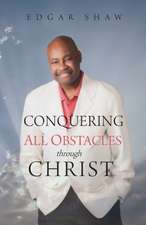The Design of Childhood: How the Material World Shapes Independent Kids
Autor Alexandra Langeen Limba Engleză Paperback – 10 iun 2020
Preț: 52.07 lei
Preț vechi: 65.63 lei
-21% Nou
Puncte Express: 78
Preț estimativ în valută:
9.96€ • 10.39$ • 8.28£
9.96€ • 10.39$ • 8.28£
Carte disponibilă
Livrare economică 27 februarie-13 martie
Preluare comenzi: 021 569.72.76
Specificații
ISBN-13: 9781632866363
ISBN-10: 1632866366
Pagini: 416
Ilustrații: b/w photos throughout
Dimensiuni: 140 x 210 x 32 mm
Greutate: 0.41 kg
Editura: Bloomsbury Publishing
Colecția Bloomsbury Publishing
Locul publicării:New York, United States
ISBN-10: 1632866366
Pagini: 416
Ilustrații: b/w photos throughout
Dimensiuni: 140 x 210 x 32 mm
Greutate: 0.41 kg
Editura: Bloomsbury Publishing
Colecția Bloomsbury Publishing
Locul publicării:New York, United States
Caracteristici
Her blog comments on contemporary objects and public space: Writes a monthly Opinion column for Dezeen since January 2014 and had a weekly blog at Design Observer from 2010 to 2014, (She has more than 12K followers on Twitter and more than 5K followers on Instagram.)
Notă biografică
Alexandra Lange is an architecture and design critic whose essays, reviews, and features have appeared in design journals, New York magazine, the New Yorker, the New York Times, Curbed, Design Observer, Dezeen, and many other publications. She received a PhD in twentieth-century architecture history from the Institute of Fine Arts at New York University. She is the author of Writing about Architecture: Mastering the Language of Buildings and Cities, the e-book The Dot-Com City: Silicon Valley Urbanism, and co-author of Design Research: The Story that Brought Modern Living to American Homes. She lives in Brooklyn, New York.
Recenzii
Lange, an architecture critic, shows that the desire to foster children's creativity is not always served by the increased sophistication of playthings . . . [She] details the transformation of homes, schools, and cities to include space for play
[A] captivating design history.
As expected, the book contains chapters devoted to charting the history of important toys, such as wood blocks and Lego. But Design of Childhood casts a wider, more ambitious net, looking at the ways in which attention to children and their needs has helped shape design at large . . . Lange's work brings together topics that are generally covered in isolation. You'll find plenty of books on playground design, school design or toy design. It's much harder to find anything that weaves those strands together for a broader view of how design has contended with evolving ideas of childhood . . . In this regard, her book is essential.
Lange skillfully explores how the design of children's toys and built environments reflects evolving philosophies of child-rearing and development . . . Powerfully remind[s] readers of the importance of constructing spaces that make all people, including children, feel both welcomed and independent.
An informative road map for those who want to maximize their children's material environment . . . Parents and educators will discover a wealth of information to inspire and help 'make childhood a better place.'
[Lange] might be the most influential design critic writing now. She brings her considerable powers, both as an observer of objects and spaces and as a writer of sentences, to The Design of Childhood, which provides history and commentary on toys, houses, schools, playgrounds, and cities . . . [and] reveals some significant social inequities . . . We all survived our childhoods. I think the real lesson of the book is that it's possible to do more than that. Here, Lange seems to argue. This. These are the tools--no, the toys--that we can use to grow up into the people we most want to be.
[A] fascinating look at how our surroundings shape our childhoods, both today and in the past.
[Lange] writes with both an academic's expertise and a journalist's hooks and accessibility . . . Lange's survey shows how kids learn to be creative, social citizens in these different spaces."
A fascinating and sobering story . . . With Lange's historical perspective, though, solutions emerge. Most fundamental, perhaps, is that children should be considered citizens, not consumers.
[W]e are lucky to have a writer like Lange putting children's environments into context, to help us see the responsibility we bear, and to make better decisions about what and how we build for children in the future.
An eye-opening look at how well-meaning designers, operating under the influence of ever-shifting philosophies, have long attempted to foster children's motivation and competence while, at the same time, keeping them safe, entertained, and out from underfoot. We applaud Lange's insight that - even if it inconveniences or worries the grownups of today - kids of all backgrounds deserve toys, school buildings, and playgrounds that will help cultivate the active, creative, inquiring grownups of tomorrow.
From the Lego-covered living room rug to the contested streets of our contemporary cities, one of our greatest voices on design and architecture casts her eye, and critical acumen, on the spaces that children inhabit - and the way children inhabit those spaces - and the results are nothing short of spectacular. The Design of Childhood is like a secret guidebook to a landscape in which we all dwell, but so often fail to see
In a world in which stealthy corporate marketing and the allure of devices are consuming our children's attention and spirit, Alexandra Lange's learned and original perspective reveals the impact of enlightened design in stuff and spaces, old and new.
The Design of Childhood is an extraordinary book. Peering through the lens of children's play, Alexandra Lange deftly reveals the remarkable connection between freedom, creativity, and fun.
Like a fairy tale with the capacity to enthrall adults, Alexandra Lange's wonderful book about design for children is, in the end, the story of design for all of us. Lange's account of the way kids play, learn, and live has lessons for anyone who cares about the crafting of products, places, and experiences
With curiosity and a satisfying thoroughness, Lange examines the decisions-however seemingly minute-toymakers and architects make and how these can affect children's behavior, values, and health in subtle ways.
The Design of Childhood is as revelatory with lessons about the history of design as it as with lessons about childhood . . . The book achieves the rare trick of staying relevant and compelling to an audience of planners and urban designers even when the subject ostensibly on matters of smaller scale than what we think of as the built environment.
It's normal for parents to obsess over their children: which school should they go to, which kids should they play with, what sport they should play. Design critic Alexandra Lange makes the case for the importance of objects and design in this canny new book, arguing that the way kids play (and the objects they play with) play an essential role in their development. Is there a difference between wood, plastic, or digital toys? What can kids learn from a see-saw or a slide? It may seem trivial but the way we play, Lange argues, reflects the way we live.
[A] captivating design history.
As expected, the book contains chapters devoted to charting the history of important toys, such as wood blocks and Lego. But Design of Childhood casts a wider, more ambitious net, looking at the ways in which attention to children and their needs has helped shape design at large . . . Lange's work brings together topics that are generally covered in isolation. You'll find plenty of books on playground design, school design or toy design. It's much harder to find anything that weaves those strands together for a broader view of how design has contended with evolving ideas of childhood . . . In this regard, her book is essential.
Lange skillfully explores how the design of children's toys and built environments reflects evolving philosophies of child-rearing and development . . . Powerfully remind[s] readers of the importance of constructing spaces that make all people, including children, feel both welcomed and independent.
An informative road map for those who want to maximize their children's material environment . . . Parents and educators will discover a wealth of information to inspire and help 'make childhood a better place.'
[Lange] might be the most influential design critic writing now. She brings her considerable powers, both as an observer of objects and spaces and as a writer of sentences, to The Design of Childhood, which provides history and commentary on toys, houses, schools, playgrounds, and cities . . . [and] reveals some significant social inequities . . . We all survived our childhoods. I think the real lesson of the book is that it's possible to do more than that. Here, Lange seems to argue. This. These are the tools--no, the toys--that we can use to grow up into the people we most want to be.
[A] fascinating look at how our surroundings shape our childhoods, both today and in the past.
[Lange] writes with both an academic's expertise and a journalist's hooks and accessibility . . . Lange's survey shows how kids learn to be creative, social citizens in these different spaces."
A fascinating and sobering story . . . With Lange's historical perspective, though, solutions emerge. Most fundamental, perhaps, is that children should be considered citizens, not consumers.
[W]e are lucky to have a writer like Lange putting children's environments into context, to help us see the responsibility we bear, and to make better decisions about what and how we build for children in the future.
An eye-opening look at how well-meaning designers, operating under the influence of ever-shifting philosophies, have long attempted to foster children's motivation and competence while, at the same time, keeping them safe, entertained, and out from underfoot. We applaud Lange's insight that - even if it inconveniences or worries the grownups of today - kids of all backgrounds deserve toys, school buildings, and playgrounds that will help cultivate the active, creative, inquiring grownups of tomorrow.
From the Lego-covered living room rug to the contested streets of our contemporary cities, one of our greatest voices on design and architecture casts her eye, and critical acumen, on the spaces that children inhabit - and the way children inhabit those spaces - and the results are nothing short of spectacular. The Design of Childhood is like a secret guidebook to a landscape in which we all dwell, but so often fail to see
In a world in which stealthy corporate marketing and the allure of devices are consuming our children's attention and spirit, Alexandra Lange's learned and original perspective reveals the impact of enlightened design in stuff and spaces, old and new.
The Design of Childhood is an extraordinary book. Peering through the lens of children's play, Alexandra Lange deftly reveals the remarkable connection between freedom, creativity, and fun.
Like a fairy tale with the capacity to enthrall adults, Alexandra Lange's wonderful book about design for children is, in the end, the story of design for all of us. Lange's account of the way kids play, learn, and live has lessons for anyone who cares about the crafting of products, places, and experiences
With curiosity and a satisfying thoroughness, Lange examines the decisions-however seemingly minute-toymakers and architects make and how these can affect children's behavior, values, and health in subtle ways.
The Design of Childhood is as revelatory with lessons about the history of design as it as with lessons about childhood . . . The book achieves the rare trick of staying relevant and compelling to an audience of planners and urban designers even when the subject ostensibly on matters of smaller scale than what we think of as the built environment.
It's normal for parents to obsess over their children: which school should they go to, which kids should they play with, what sport they should play. Design critic Alexandra Lange makes the case for the importance of objects and design in this canny new book, arguing that the way kids play (and the objects they play with) play an essential role in their development. Is there a difference between wood, plastic, or digital toys? What can kids learn from a see-saw or a slide? It may seem trivial but the way we play, Lange argues, reflects the way we live.







